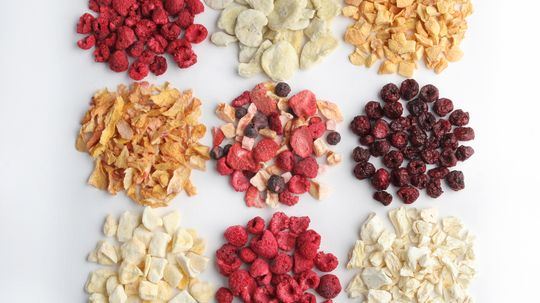Unlocking the Secrets Behind Freeze-Drying: A Journey into Sublimation
An In-Depth Look at the Intricate Art of Freeze-Drying
Freeze-drying, scientifically known as lyophilization, is a captivating process that involves removing moisture from various substances while preserving their structure and integrity. This method has found applications in diverse fields such as food preservation, pharmaceuticals, and even space exploration. Let us delve into the intricacies of this remarkable technique.
The Marvelous Dance Between Freezing and Drying
In freeze-drying, the first step entails subjecting the material to freezing temperatures. By doing so, water molecules within it transform into ice crystals. These delicate formations are then carefully preserved throughout subsequent stages to maintain product quality.
Once frozen solid, a vacuum chamber comes into play. The pressure inside this chamber is significantly reduced to create an environment where sublimation can occur – a process where ice directly transitions from its solid state to vapor without passing through a liquid phase.
This sublime dance between freezing and drying allows for efficient removal of moisture content while minimizing damage or alteration to the substance being processed. It’s like witnessing nature’s own magic trick unfold before our eyes!
A Symphony of Temperature Control and Precision Timing
To ensure optimal results during freeze-drying, precise temperature control plays a pivotal role. Throughout different stages of this intricate procedure, temperature adjustments are made with meticulous precision.
During primary drying (also known as sublimation), low temperatures are maintained to facilitate gradual vaporization of ice crystals without causing any structural harm or loss in potency for sensitive materials such as pharmaceuticals or biological samples.
Secondary drying follows, where residual moisture is removed. This step involves raising the temperature slightly to accelerate the evaporation process while maintaining product stability.
The Final Act: Packaging and Storage
After undergoing this meticulous freeze-drying journey, the preserved substance is ready for packaging and storage. The removal of water content significantly extends its shelf life by preventing spoilage or degradation caused by microbial growth or chemical reactions.
By sealing these dried products in airtight containers with minimal exposure to humidity, their longevity can be further enhanced. This makes freeze-dried goods an ideal choice for long-term storage, emergency supplies, or even space missions where weight and durability are crucial factors.
In Conclusion: A Triumph of Science and Preservation
Freeze-drying stands as a testament to human ingenuity in preserving delicate substances without compromising their quality. From gourmet meals to life-saving medications, this remarkable technique has revolutionized various industries worldwide.
So next time you enjoy that crispy astronaut ice cream or savor those perfectly preserved strawberries out of season, take a moment to appreciate the intricate dance between freezing and drying that made it all possible!


